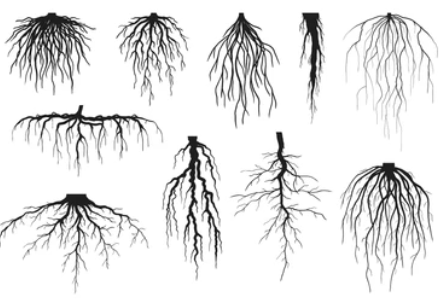
The root system is an important part of crop fixation and organ for nutrient and water absorption. Therefore, Root Image Analyzer is commonly used to study and analyze plant nutrition. Soil moisture and nutrition are important in promoting healthy plant root growth, making it an ideal tool for field root research and plant root growth monitoring.
About Root Imaging Analysis
Root image analysis can analyze the topological morphology relationships and connections of the main and lateral roots of plants, as well as the color changes of the root tips, to study the shape and structure of roots. Root image analysis features automatic analysis of many images. You can interactively edit and correct the automatic analysis results locally to ensure the scientific validity of the data.
Analytical Capabilities
- Root Imaging Analysis can customize the segmented diameter with unequal spacing and automatically measure the length, projected area, surface area, volume, and distribution parameters of each segmented diameter.
- Root Imaging Analysis can color analyze the root system, determine the number of surviving roots, and output the diameter, length, projected area, surface area, and volume of different colored roots.
- Root Imaging Analysis can analyze the topology of the root system, determine the number of root connections, relationship angle, and analyze the length and number of bifurcations of the main root or any lateral root individually and automatically, display the corresponding parameters of any diameter section of the labeled root system (the number of grades and the range of the diameter of the grades can be changed arbitrarily, and it can be customized without equal spacing). It can make corrections for the bifurcation of the root, such as cutting, merging, and connecting. Moreover, it can return to the corrective operation to quickly obtain 100% correct results. The correction operation can be rolled back to obtain 100% correct results quickly.
- Automatic measurement of the fractal dimension of the root system using the box dimension method. The percentage of rhizobial volume in the root system can be analyzed to objectively determine the amount of rhizobial body contribution.
- Fully automated root analysis for large quantities, with editable corrections to the graphs of each analysis result.
- Root Imaging Analysis enables high-capacity automated estimation of root biomass distribution.
- Root Imaging Analysis allows for interactive guided analysis of in situ root images, locking and editing root paths, correcting root length, thickness, and location.
Advantages of Root Analysis
Through root analysis, you can obtain information on morphological characteristics, branching patterns, and spatial distribution of the root system, and then establish a plant growth model to predict plant growth and optimize plant cultivation management.
Root system is the interface between plants and soil environment; through root system analysis, we can understand the adaptability of plants to the soil environment.
- Ecosystem Function Research
The root system has an essential influence on ecosystem functions such as soil conservation, water regulation, nutrient cycling, and biodiversity maintenance. Through root system analysis, we can gain a deeper understanding of the contribution of plant roots to ecosystem functions, reveal the interaction mechanism between plants and soil, and provide a scientific basis for ecosystem management and protection.
If you are interested in our platform, please do not hesitate to contact us anytime.
Our products/services are For Research Use Only. Not For Clinical Use!
